 Three days ago in Hauz Khas in New Delhi, on Chaudhary Dalip Singh Marg:
Three days ago in Hauz Khas in New Delhi, on Chaudhary Dalip Singh Marg:
Me: “Bhaiya, Supreme Court chaloge?” (Brother (?), will you go to the Supreme Court?)
Auto-driver: “Kaunse waale?” (Which one?)
As I informed him that there is only one Supreme Court in India, ‘India Gate ke paas’ (‘Near India Gate’), I thought to myself whether there was any chance that the auto-driver was subtly driving home the point that the Supreme Court being located only in one place made it relatively inaccessible for the rest of the country, and that smaller benches all over the country was the way to go?
Now, that would be an enlightened auto-driver. He may be right or wrong about Supreme Court benches, but by this standard, the ‘ordinary litigant’ would likely be a truly informed and empowered one!
Of course, what gave the auto-driver away was ‘Ek Saket mein bhi toh hai’ (‘There is one in Saket as well.’). It would have meant precious little to him to learn that ‘Woh toh District Court hai’ (‘That is a District Court’). If the rule of law presupposes that citizens have a basic awareness of their courts, we have a long way to go.
The astute use of technology will doubtless be critical in making courts more accessible. The Supreme Court’s recently released Display Board application for Android mobile devices seems to be an attempt in this direction. After it was released (with some fanfare), I imagined that the app would look something like this:
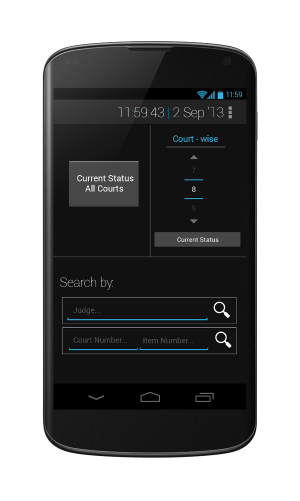
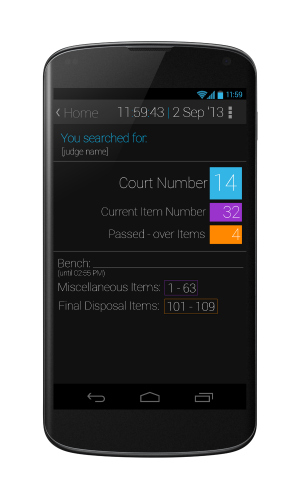
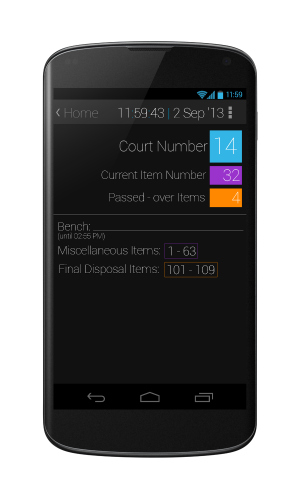
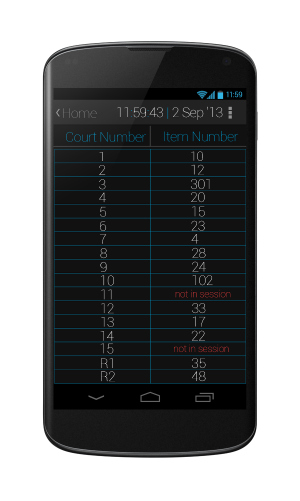
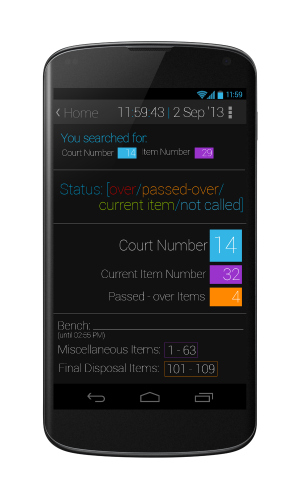
At the moment, the application replicates the Supreme Court Display Board as on the website. One hopes that it is a work in progress, with an update to follow soon (there is a Java version as well).
There are harmless quirks, and there are harmless quirks that can result in a case being dismissed for ‘non-appearance’. Imagine that you are an advocate on your very first visit to the Supreme Court. You are nervous, but prepared. You have two ‘matters’ – one each in Court 14 and (the currently unoccupied) Court 15. It looks like you will not have to run around too much because the court rooms should be adjacent.
Beware! As you bound up the stairs from the main entrance, you will see Court 1 (the Hon’ble Chief Justice’s Court) in front of you, flanked by Courts 2 and 5 to your left, and Courts 3 and 4 to your right.
You eventually figure out that Courts 6-15 are accessible through a long corridor leading to the other end of the compound. The first room to your left after the corridor, thankfully, is Court 14. Phew! Next to that is… Court 12. Confused? Where is Court 15, or even 13 for that matter! You run along further, crossing 10, 8, and 6. Then 7, 9, 11, and 13, after which is 15 (more than 100 metres away from Court 14).
Remember: 5, 2, 1, 3, 4; 14, 12, 10, 8, 6, 7, 9, 11, 13, 15 (counting anti-clockwise).
Why this sequence? Beats me, though a Court by any other number would be just as cramped for space.
(Aditya Verma practices as an Advocate at the Supreme Court of India. He is an alumnus of NLSIU, Bangalore, and is admitted as a solicitor in England and Wales.)
